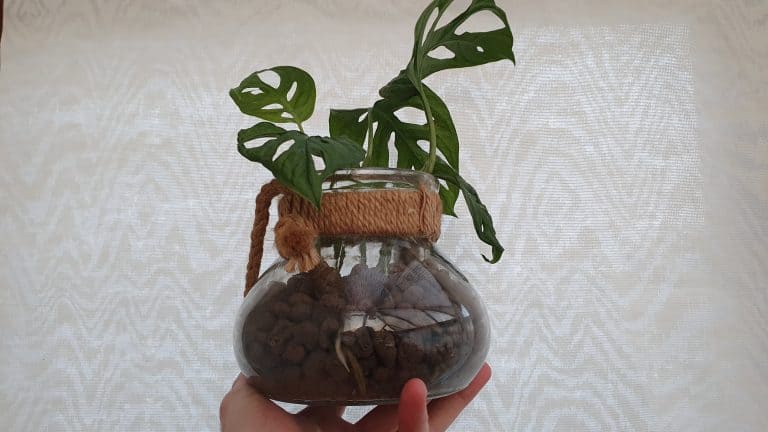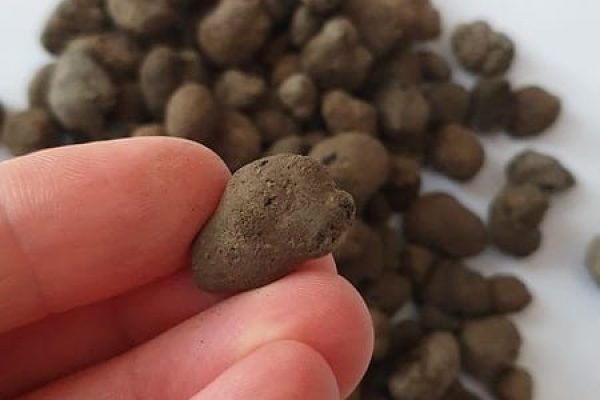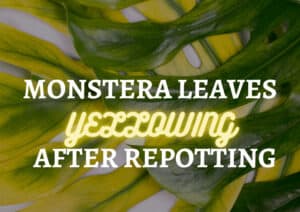How Often Do You Water A Plant That Is Potted In Leca? (Quick LECA Watering Guide)
-
Chris Dosser
- May 6, 2021
If you buy something using the retail links in our articles, sometimes we earn a small affiliate commission. This does not impact the products we recommend.
It’s a common question posed by houseplant enthusiasts: how often do you water a plant that’s potted in Leca? Well, the answer is pretty straightforward!
As a rule of thumb, you just need to check that the water poured in during the previous watering has been entirely absorbed by the Leca. If the water is gone, that means it’s all stored in the clay balls. And since the roots are drinking from the moisture stored in those balls at their discretion, you can pour more in.
Just be mindful that the roots are not totally submerged underneath water for extended periods when topping up. The only water the roots should be able to access is the water absorbed by the Leca balls.
From experience, this roughly equates to indoor plants kept in 1 liter pots filled with Leca needing watering once every 21 days.
In addition to providing plants with a consistent supply of water there are several other benefits of growing houseplants in semi-hydro soil, these are summarised in our semi-hydro benefits summary here.

What is LECA, and how does it differ from soil?
Leca stands for Lightweight Expanded Clay Aggregate.
They’re little balls of baked clay that soak up water and expand whilst doing so. They store the water, which your plant’s roots can then draw up to keep itself hydrated. This is useful because the plants can take onboard water as and when it is needed.
However, Leca isn’t soil. This means it has no organic matter or nutrients, something else that plants sorely need. To compensate you’ll have to add nutrients in the form or a liquid feed to the water yourself.
While this is an added consideration compared to simply using potting compost, that doesn’t mean Leca is any less useful. In fact, it has many advantages over traditional growing medium!

Why bother using LECA?
Admittedly, a bunch of clay balls doesn’t sound that useful for growing plants. They can’t even keep any nutrients. And yet, there is actually significant reason to use Leca compared to soil. It has many benefits that soil does not.
Leca helps avoid overwatering
It’s just as easy to kill a plant by overwatering it as it is underwatering it. When you pour water into soil, especially in pots, it often ends up pooling, forcing the roots of your plants to sit in water constantly, potentially harming or killing them.
With Leca, you can avoid this problem. With Leca, you can create a false bottom of sorts in your pot, filling the pot with water until it is just beneath the roots of your plant. The clay balls will absorb the water, but the roots wll not drink directly from it.
Instead, the roots can sap water from the Leca, but only when it actually needs to drink. The plant knows better than anyone what it needs to survive, so allowing it to choose when to drink as opposed to the human guessing makes overwatering extremely unlikely.
Leca reduces the chances of root rot
Root rot is difficult to notice when you are growing a plant in soil. Naturally, that’s because you can’t see the roots. So while your plant may look fine intially, you can’t really tell anything is wrong until it is dead or dying. Naturally, that’s not very good for you or your plant.
This is less of a concern with Leca, for two reasons. First of all, the root system is much easier to see. If you used a transparent pot, you could look right in and see the roots. In some cases, you can lift the whole plant out of the pot, and see the roots intertwined with the balls themselves.
Root rot is often caused by a lack of oxygen getting to the roots themselves. But with Leca, there are plenty of gaps for air to get down to the roots. This means root rot is far less of an issue when growing plants with Leca.
Leca reduces the likelihood of pests
Soil has nutrients that plants need. But it has nutrients a lot of other living things need as well. Worms, bugs, and all sorts of pests. By removing the organic aspect of soil and replacing them with Leca, which doesn’t have anything like that, you significantly reduce the chances of pests showing up.
Root rot also has a tendency to attract pests, and as we mentioned previously, the chances of root rot with Leca is greatly reduced. Both of these factors combined means you can reasonably expect to see far less pests when using Leca.
Wrap-up
So, that’s a crash course about Leca and how to water plants that are growing with it. Here’s a quick summary of everything we’ve covered.
- Leca is clay balls that expand when they absorb water, and plant roots drink from saturated clay balls
- Leca doesn’t have nutrients like soil, so you have to add nutrients to the water
- Leca helps reduce overwatering by keeping plant roots from drowning in it
- Leca reduces chances of root rot by increasing oxygen flow to the roots
- Leca reduces the likelihood of pests because there’s no organic material available
- When watering with Leca, fill your pot until the water is just beneath the roots
- When there is no more water at the bottom of the pot, refill it to just beneath the roots

Chris Dosser
Co-Founder of Eden Indoors
Chris is a self-taught horticulturist with over a decade of experience caring for houseplants and creating lush, thriving indoor oases. He specializes in Monstera, and by self admission has a serious problem with buying and propagating rare indoor plants!
Similar Posts
The Benefits Of Misting Your Monstera Plant: Proper Techniques Explained
Discover the benefits of misting your Monstera including how it improves plant health, prevent pests, and creates a better overall growing environment.
Monstera Leaves Yellowing After Repotting: Causes and Solutions
Yellowing leaves may be a sign that your Monstera is experiencing shock or stress, but is this caused by overwatering, underwatering or nutrient deficiencies?



